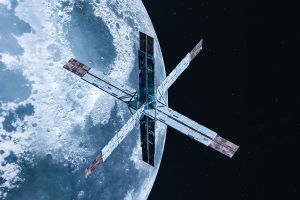Earth’s distinctive blue appearance has captivated observers for centuries, setting the planet apart from its celestial neighbors.
This remarkable color is not incidental but the result of complex, interrelated natural phenomena that combine the presence of vast oceans, atmospheric composition, and planetary characteristics unique within the solar system.
The Role of Water and Oceans
At the heart of Earth's blue color lies the abundance of liquid water. Approximately 71% of Earth’s surface is covered by oceans, vast expanses of liquid water that absorb and scatter sunlight. Water absorbs colors in the red part of the light spectrum and reflects and scatters blue wavelengths, creating the deep and vivid blue hue visible from space.
Other planets in the solar system lack extensive bodies of liquid water on their surfaces. For example, Mars, often called the Red Planet, is covered with iron oxide-rich dust that reflects red light, while Venus remains shrouded in thick, reflective clouds of sulfuric acid, masking any potential surface color and reflecting only white-yellow hues. The presence of stable, liquid oceans is critical in defining Earth’s chromatic uniqueness.
Earth’s oceans also perform a vital climatic function, regulating temperature by absorbing solar heat and distributing it globally through currents. This regulation helps maintain conditions suitable for liquid water in its liquid state, avoiding freezing or vaporization at planetary-scale, a delicate balance absent on other planets.
Atmospheric Composition and Rayleigh Scattering
The atmosphere of Earth plays a crucial role in rendering the planet blue. Composed primarily of nitrogen and oxygen, the atmosphere scatters sunlight through a process known as Rayleigh scattering.
This effect preferentially scatters shorter wavelengths of light, such as blue and violet, more than longer red wavelengths. Though violet light scatters even more strongly, human eyes are more sensitive to blue light, thus the sky and reflected Earth appear blue from space.
In contrast, planets like Mars have much thinner atmospheres with different compositions, resulting in different scattering effects and colors. Venus’s dense, cloud-covered atmosphere scatters light differently as well, contributing to its yellowish-white appearance from afar.
Planetary Size, Gravity, and Magnetic Field
Earth’s moderate size and gravity have been essential in retaining a stable atmosphere and vast liquid water reservoirs. Mars, smaller and with weaker gravity, lost much of its atmosphere and surface water over geological timescales due to solar wind stripping and insufficient gravitational hold.
Earth’s magnetosphere, generated by its molten iron core, deflects harmful solar and cosmic radiation, protecting the atmosphere and water from erosion and decomposition.
This protection mechanism supports the longevity of the conditions that contribute to Earth’s blue visage. Without the magnetic field, solar wind could have stripped away lighter atmospheric elements, compromising atmospheric composition and the presence of liquid water.
Geological Activity and the Water Cycle
Earth’s internal geological activity profoundly impacts surface conditions and, indirectly, the planet’s characteristic color. Plate tectonics drive the recycling of water through volcanic out-gassing and subduction processes. Volcanic gases replenish atmospheric components essential for maintaining pressure and temperature conditions fit for liquid water.
Moreover, the water cycle — evaporation, condensation, precipitation works continuously to renew surface water and maintain oceans. Clouds, formed by water vapor, also reflect sunlight, contributing to Earth’s visual dynamics but not masking its blue appearance.
Dr. Carl Sagan, a renowned astrophysicist, articulated the uniqueness of Earth’s color from space: "The pale blue dot is a reminder that Earth is a singular oasis of life in the vast cosmic darkness," emphasizing how the planet’s appearance reflects its exceptional conditions.
Dr. Neil deGrasse Tyson, an astrophysicist and science communicator, noted, "Earth’s blue hue is not merely a color but a signature of a planet where water and atmosphere work in concert to foster life," highlighting the interdependence of multiple factors behind Earth’s blue mantle.
Earth's designation as the only blue planet in the solar system arises from an intricate interplay of abundant liquid water, atmospheric composition, stable geology, and protective magnetic fields.
Vast oceans absorb and scatter sunlight, while the atmosphere’s Rayleigh scattering imparts the vivid blue color visible from space. The planet’s size and magnetic shield preserve these conditions over geological timescales.
Geological activity sustains the water cycle vital for maintaining this state. Together, these factors craft the unique blue visage that distinguishes Earth among its planetary neighbors, symbolizing a balance that enables life and captures the imagination of observers across the cosmos.


